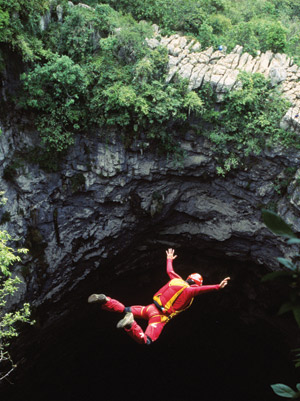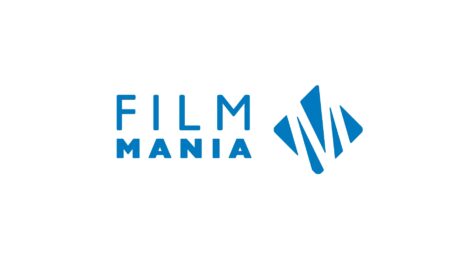Into the unknown
Expanding geographical reach and building a strongly branded presence across the digital domain remain key preoccupations for international channel providers.
In the wake of the economic downturn, international channel providers are continuing to look to make the most of the opportunities available to expand their reach, both expanding to new territories and platforms within existing territories. Moves to build a digital footprint by developing spin-offs from the core brand continue, albeit at a slower pace. And thanks to the decline in advertising , there is a clear trend towards a refocus on pay-TV.
Continued international expansion remains a priority for A&E Television Networks, says Sean Cohan, senior vice-president, international. He identifies two priorities – expanding into new and existing territories and “a double-down on content – continued investment and optimisation in content we’re delivering to viewers, coupled with thoughtful cost management.”
 International expansion
International expansion
The growth of digital platforms also remains a priority for Eurosport, according to Jean-Thierry Augustin, managing director, distribution and development. “More specifically, for our TV channels, this means we will concentrate on reinforcing them with more content,” says Augustin, citing the example of this year’s acquisition of exclusive broadcast rights to the German Bundesliga in 20 countries for Eurosport 2.
The story is similar at Liberty Global-owned Chello Zone, which owns and operates 10 thematic brands in over 100 countries. For Louise Cottrell, vice-president, affiliate sales, continued expansion is key: “Over time we have been working on making available our full portfolio to as wide an audience as possible and 2010 will see some of our brands launch into new countries,” she says, adding that the broadcaster will look at further localisation opportunities and in some cases partnership opportunities and new channel development.
Chello Zone is part of Liberty Global’s broader portfolio of European content assets, grouped together under the Chellomedia umbrella. “We are still seeing a lot of opportunities for growth,” says Neil Curran, chief operating officer at Chellomedia. “Digital platforms are still growing strongly and a lot are looking for new channels.” Expansion could involve the acquisition of existing content assets in particular markets or the creation of joint ventures with partners. For Curran, success is about balancing the need to provide strong channels with local relevance with the provision of a portfolio of channels that can make an impact in the crowded digital market, and also the need to have strength in depth within particular genres. He cites as one example Hungarian cooking channel Paprika, which Chellomedia has taken into neighbouring territories with the inclusion of local content.
Although emerging markets have been hit hard by the recession, opportunities in these territories remain important to MTV Networks International (MTVNI). “We are anticipating continued growth across the emerging markets region in 2010, albeit more patchy,” says Bhavneet Singh, managing director and executive vice-president, emerging markets. “Against this context, our strategic priorities will be to continue building share and scale in key markets while also continuing down the path of diversifying our offering across platforms and strengthening our offering to the kids and adult demographics.”
Diversification of revenue is a priority for leading international channel provider Discovery. According to Greg Ricca, president and CEO, Discovery Networks International, the company has three key priorities: expanding its distribution base; building local ad sales capabilities; and optimising its programming mix by delivering strong content across multiple genres. “Ratings growth and increasing international subscribers are a key part of our strategy,” says Ricca.
Audience reach is particularly important for publicly-funded news channel France 24. “France 24 has had one major goal since its creation: conquering new territories and developing programming in order to extend our audiences throughout the world,” says Philippe Rouxel, vice-president, worldwide distribution. Rouxel says the channel’s priorities this year are to gradually increase distribution in Asia and then in America. In terms of editorial, France 24 will also aim to extend its broadcasting in Arabic from 10 to 24 hours daily.
For news channel Al Jazeera, a priority is to make further inroads into the US, along with Canada, Australia and India for its English-language channel, while buttressing the position of its Arabic channel in the Middle East. For commercial director Phil Lawrie, IPTV platforms afford opportunities for growth, particularly in Asia and the Middle East.
Pay versus free
For UK news channel Sky News, whose core target is UK pay-TV, international distribution is seen as a useful add-on. “From the international point of view, we just want to grow our reach globally,” says Liz Higgins, head of commercial strategy. “We are working hard to achieve that.” She says distribution in Asia and the Middle East are key priorities.
For Higgins, the model for international is simply to make the best of the opportunities available: “That means advertising and carriage fees, and we are looking at mobile opportunities as well.”
“Over time we have been working on making available our full portfolio to as wide an audience as possible.”
Louise Cottrell, Chello Zone
More generally, the impact of the recession plays to pay-TV’s strengths, Eurosport’s Augustin believes. About 75% of Eurosport’s revenues come from multi-year subscription fees that have proved resilient in the downturn. “While most channel providers are feeling pressure from the economic climate, or might at some point, the general feeling is that those who rely most heavily on pay-TV models for income associated with high quality content are likely to come away ‘ahead of the game’ as compared with those who rely completely on advertising,” says Rouxel. He believes that continued innovation is also important to beating the recession. “We are continuing our development through innovation with the launch of Eurosport 2 in HD, the launch of our catch-up TV service, and acquiring new rights [including Germany’s Bundesliga],” he says.
A similar bias towards pay in the kids market is identified by Paul Robinson, managing director of kids channel KidsCo. “The trend is for kids to watch dedicated children’s channels and not free-to-air blocks,” says Robinson. “Priorities in the next year will be to commission compelling programming and launch digital services. Advertising-funded kid’s channels will struggle to retain their revenue.”
The strength of pay-TV is emphasised by Dean Possenniskie, general manager and senior vice-president EMEA, BBC Worldwide. “I think the reason pay-TV is holding up well is some of the value-added services that are now key,” says Possenniskie. “An example on DTH and satellite is HD. Viewers in all of the market’s we’re dealing in are really taking to HD. On the cable side, the expansion of VOD offerings has become really important.”
Some pay broadcasters are continuing to experiment with free. Discovery has built a mixed portfolio of pay and free properties internationally. “We will continue to identify free-to-air platforms that expand our reach, deliver large audience numbers and provide additional opportunities to build advertising revenue,” says Ricca. “DMAX in Germany was our first free-to-air channel with an audience reach of more than 32 million.”
Channels with a particular mission to deliver a large audience, such as France 24, take an even-handed view. The channel currently has a 50:50 split between free and pay. For Al Jazeera, revenue models must be considered in the context of the broadcaster’s wider remit – with a commitment to serve its audience coming first. “We will continue to evolve a strategy that allows us to generate income without undermining our commitment to public service and no-compromise, unhindered reporting,” says Lawrie.
Branding
Digitisation – whether pay or free – presents its own challenges. Over the past few years many channel providers have developed spin-off digital channels as part of a broader attempt to carve out digital real-estate and secure the prominence of their channels on the EPG of operators.
“Branding is critical, particularly taking a portfolio out to the market based on the quality and values of the BBC,” says Possenniskie. “It’s vital that you’ve built a trusted brand on your core channels first before taking that across onto new platforms. Viewers will find your content on different platforms if they have a trusting relationship with your brand.”
Striking a balance between extending the brand’s presence and diluting it is a difficult challenge. “It was really important for us not to spread ourselves too thin,” says Possenniskie, pointing to the example of BBC Knowledge, which comprises five defined sub-genres: science and technology, the world, the past, business and people. “Potentially any one of those could merit a full channel,” says Possenniskie. “We felt that containing all of that programming within a channel like BBC Knowledge would mean that it’s really diverse in its offering. It’s also allowing us to develop a channel of high quality content.”
 For Chello Zone’s Cottrell, launching new channels allows it to gain a larger share of the rapidly developing multi-channel television market and offers further choice to a loyal audience already enjoying other Zone brands.
For Chello Zone’s Cottrell, launching new channels allows it to gain a larger share of the rapidly developing multi-channel television market and offers further choice to a loyal audience already enjoying other Zone brands.
For Curran, Chellomedia includes both channels with a specifically local or regional focus and those with a clear international appeal. Amongst examples of channels that can be delivered across markets is JimJam, which Curran says “has been designed to grow internationally very quickly”.
However, Discovery’s Ricca sounds a note of caution. “Brand consistency is critical,” he says. “Discovery has leveraged the appeal and credibility of the flagship Discovery Channel brand to launch new channels around the World.”
It is a theme taken up by AETN’s Cohan. “First, a strong brand that says what it is ‘on the tin’ and cuts through the sometimes ‘multi-hundred channel’ clutter is crucial,” he says. For Cohan, the key to success is building on an existing core brand proposition. “Spin-off brands have to be able to grow as strong standalone propositions and at the same time leave a relevant core channel with a critical mass of its own,” he says, citing the fact that History, Bio and Crime & Investigation Network all came from A&E programming strands, while Military History evolved from History.
Cohan’s views are seconded by Singh of MTVNI, which has spun off brands including Nick Jr and Comedy Central 2. “How far you can stretch a brand – both on and off-air – is dependent on the strength of the core brand,” says Singh.
Differentiating a service
Maintaining a unique selling proposition is seen as an important ingredient in differentiating a service. “We are working on a single brand, which is France 24, with a strong positioning in the market that allows us to offer a product that’s different from other International news channels,” says Rouxel. “Branding is key to recognition and credibility especially in a environment that’s highly competitive and international.”
Al Jazeera, best known as a news provider, has leveraged the recognition of its brand to branch out into other programming fields – notably sports. The group launched four new encrypted sport channels in the Middle East market in the summer, taking its sport portfolio of channels to 11, including one HD service. “Brand is vital yes – but more so are the values that sit behind the brand and make it what it is. If you get the latter wrong – if you forget where you came from then the new launch won’t meet expectations and the audience will not have trust in it, and that undermines the entire brand,” says Lawrie.
For Sky News, which is primarily targeted at an expatriate audience internationally, there is no business case for developing separate international feeds, for example. “It’s not purely an expat audience – there are interested groups that want to hear a UK voice and we are trying to reach those people as well, but we don’t change the feed,” says Higgins.
Eurosport’s Augustin believes that extensions are not a risk if the brand is strong, there is enough quality content and the positioning of each channel is clear. Eurosport currently operates six channels: Eurosport, Eurosport HD, Eurosport 2, Eurosport 2 HD, Eurosport Asia and Eurosport News. The broadcaster has also developed a range of websites in various languages, an events management division and – most recently – Eurosportbet.com an online betting service joint venture.
On top of maintaining a clear identity for spin-off channels, extending that coherent branding proposition to online and VOD activities can be particularly challenging.“For a premium service like HBO, provision of a branded multi-screen environment is extremely important. With the advent of on-demand, this can be implemented either by another branded feed or by product available on the on-demand service,” says Linda Jensen, CEO of HBO Central Europe. However, Jensen points to a number of risks inherent in such a project. One, she says, is that the meaning the brand extension is not immediately transparent to viewers. “In this instance, one has to help the viewer understand the importance of the additional feed via on/off-air promotion and very predictable scheduling on the secondary feed,” she says. This, says Jensen, would suggest that the best approach to spin-offs is to give them a clear label of their own (such as “HBO Comedy”, for example). However, such a strategy requires the spin-off to be fed with suitable acquired or commissioned content. “In many instances, additional feeds require high-volume deals for acquired content to avoid a high programme repeat ratio. Unless one can acquire exactly the product required, the ‘tag-along’ product will likely have the effect of diluting the additional feed and reducing its value to the viewer,” says Jensen.
An alternative approach is to create an entirely new brand that is complementary to the main one, as HBO has done with its ‘independent’-skewed film channel. “A collateral brand is also very helpful, if it’s complementary. Thus Cinemax, which is distinctly tilted toward independent product, festival winners, and library ‘best of’, is a better brand development as opposed to continually trying to refine the HBO brand,” says Jensen.
And one key brand extension is to develop HDTV channels, catering to the growing appetite of viewers. BBC Worldwide recently launched the BBC’s HD channel internationally for the first time in Scandinavia. “The development has been quite phenomenal. It’s really driven the customer perception of value from DTH platforms. When you see some of the growth of DTH platforms around Europe, I think much of that can be attributed to the additional value of HD,” says Possenniskie



